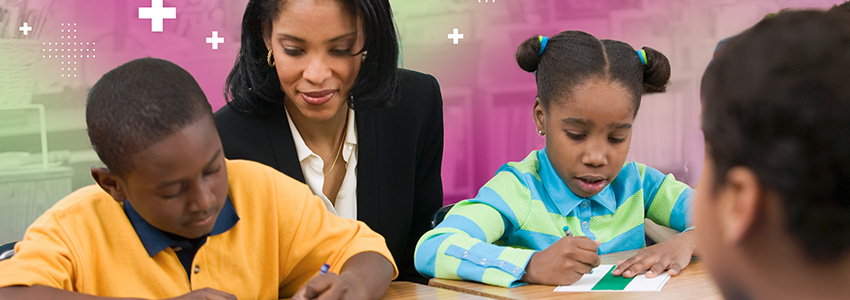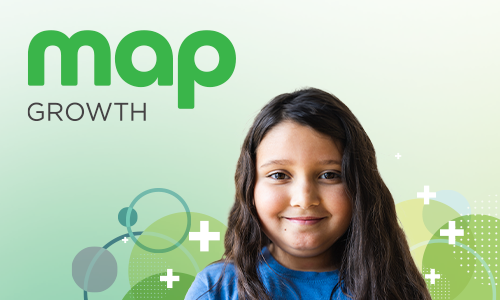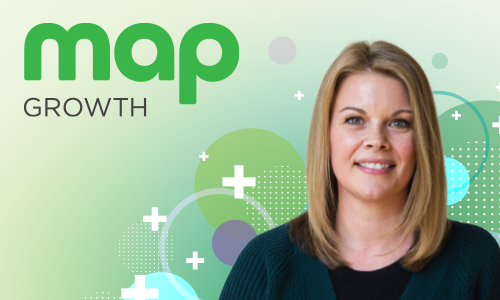
Attendance submitted. Warm-up complete. Student devices charged. Test tickets distributed. Students logged in and fully underway in their midyear benchmark assessment. As the teacher walks around the room, noting which question each student is on, he starts to consider if all the lab items are ready for the activity coming up after lunch. “They should be done testing by then, right?” The next table of students brings yet another train of thought to Mr. Wood’s mind, this time about using assessment data: “I wonder if I can complete a few of the student data trackers at lunch. Our team is meeting in a week to review this assessment data….”
As Mr. Wood gets to the next table, his thoughts are interrupted by a student who has raised her hand. Mr. Wood stops and looks at the student’s computer screen. The student says, “I’m finished. What do I do now?”
If this were a choose-your-own-adventure story, Mr. Wood would be faced with several possible choices for how he could engage with his students as, one by one, they finish their mid-year benchmark. He could simply say, “Take out a book and silently read while others work on their test.” He could encourage them to work on other work, quietly, to help them stay on track with their coursework. Mr. Wood could also take the opportunity to do mini data conferences with each student about the score they received and how they feel about the content of the assessment. In any possible outcome, Mr. Wood’s interactions demonstrate a string of decisions and systems he has set in place to help make sense of data in his classroom. His actions give insight into how he engages with data as an educator.
Luckily for us, Mr. Wood is a teacher who opted for an adventure that helps guide us through the awe-inspiring twists and turns of being an educator who uses data beyond a single moment in time and finds ways to integrate data as part of his classroom “setting,” leading to a core “charater-istic” of his “part” in any educational storyline. If you’re looking for guidance on using assessment data in your classroom, here’s how you can follow in Mr. Wood’s footsteps.
Chapter 1: Build a routine of data-driven instruction
Routines are part of every aspect of Mr. Wood’s day. He has a routine for arrival, lunch, dismissal, turning work in, small group work, and even how students request a pencil. The importance of routines is grounded in maximizing time and supporting every student he sees in his classroom. When it comes to using data to drive his instructional decision-making, Mr. Wood has a routine for that as well.
Using assessment data is most impactful when it supports students. Teachers can leverage ongoing data points to guide daily decision-making and inform their strategies. For example, once students in Mr. Wood’s class complete their benchmark assessment, they know to pull out their own goal-tracking folder and mark their new score, whether they did (or did not) meet their goal, and why they think that is. After each student is done with their assessment and goal-tracking sheet, Mr. Wood conferences with each individual to set a new goal.
While goal setting lends itself to a data routine, it does not have to live within a specific assessment window. Once Mr. Wood and his students construct a goal, a wide range of options becomes available for him and each student in his class. Mr. Wood now gets to align small groups for the next several days with students who are working on similar goals or share similar skills. Students know what they are working toward when they engage in practice or other instructional activities.
Mr. Wood leverages the goal-setting process to inform how he structures table discussions and plans to monitor student progress through teacher observations. This allows him to track and provide meaningful feedback for each student in his class. Furthermore, each time he introduces new concepts, he can quickly engage students by connecting them to their individual goals. This allows something that started in a benchmark window to expand during the months in between, giving students meaning to their learning.
Here are three questions to consider for your data routine:
- How often am I integrating data into my planning process?
- Do my students know their data?
- Can my students articulate their goals and their progress toward these goals?
Chapter 2: Differentiate instruction based on real-time insights
When students come to class, they are expected to engage in a warm-up activity. This activity typically touches on some content that has previously been addressed in class. Mr. Wood likes to pull from something recent to help gauge students’ understanding. As students complete their warm-ups, he is already walking around and taking note of who got the answers correct. This helps him see which students may need some additional support quickly. He notes their names and plans to work with these students again during independent practice time.
Mr. Wood could have decided to wait until the end of the module assessment, or the mid-year benchmark assessment, to track student understanding. However, he decided to address needs and provide support in real time, which is the primary benefit of formative assessment. In doing so, students who may miss a few warm-up activities are provided an additional layer of support that helps to address any potential misconceptions in a timely manner. This is a valuable example of using assessment data.
Warm-up activities are not the only source of data that feed into Mr. Wood’s data-driven moves. While students respond to their peers in a group discussion, Mr. Wood joins each table with a student roster and notes which students are demonstrating mastery of certain concepts and those who are still practicing their understanding. These quick checks provide Mr. Wood with a key for which students should be partnered up for a similar discussion question planned for later. Mr. Wood could also ask some students to share what they heard from their partner, knowing that one student will be sharing an answer that may not have been theirs but is, in fact, the correct answer.
At a moment’s notice, these activities provide Mr. Wood with the data he needs to help differentiate student needs. His activities and data collection exist outside a designated assessment window, which provides him with rich insights to help meet students where they are and scaffold his support as needed.
Consider the following questions as you focus on real-time insights:
- What are some things I am currently doing that could help me capture real-time insights?
- How am I using real-time data to adjust instruction for all learners?
- What systems do I have in place to capture data and make real-time adjustments?
Epilogue
As each student begins to finish an assessment, the question becomes, “What’s next?” How do we ensure that this moment in time—and the data we get from our students—go beyond the bell? How do we ensure we’re using assessment data in ways that truly benefit students?
Mr. Wood is an example of many teachers who have embraced the idea that data is connected to the overall story of student progress and success. As the teacher in the classroom, he is a member of each learner’s tale. As part of this story, he has decided to create routines that allow data-informed decisions to flourish and enrich the setting of his classroom. He is determined to capture various aspects of student understanding and performance in real time to help him be an effective supporter for all those he serves.
When choosing the next adventure of your data story, consider how you, too, can help build beyond an assessment window for your students. If your school tests with MAP® Growth™ or MAP® Reading Fluency™, you can learn more about how to put that data to good use in the assessment archive here on Teach. Learn. Grow.





